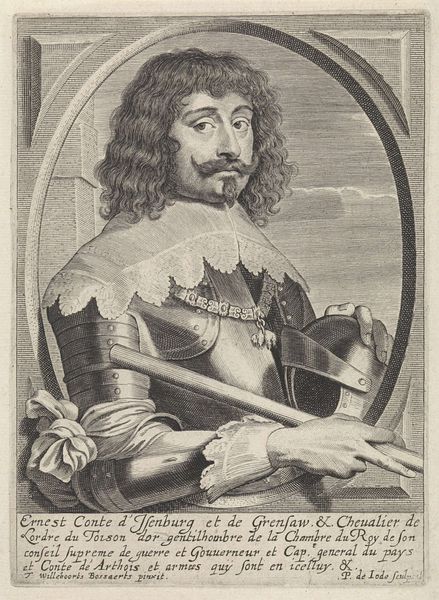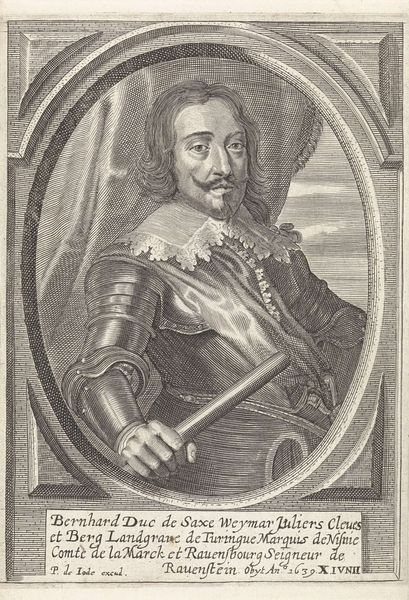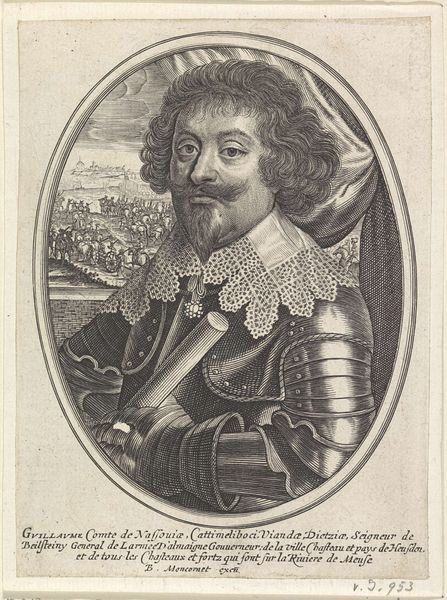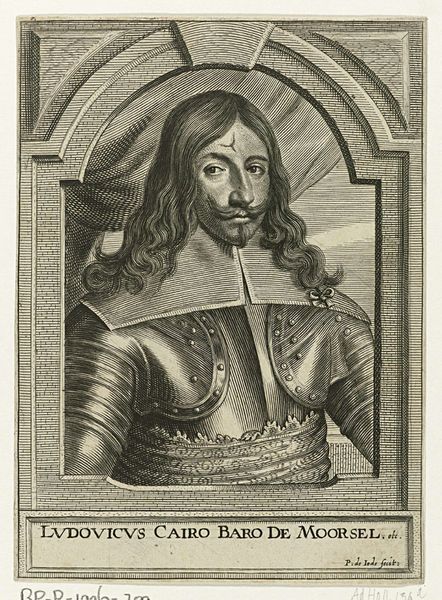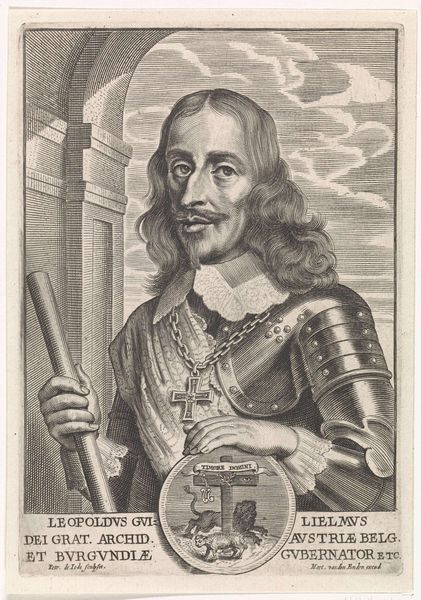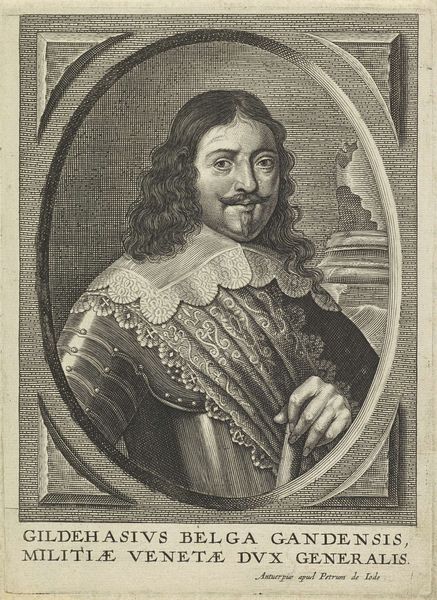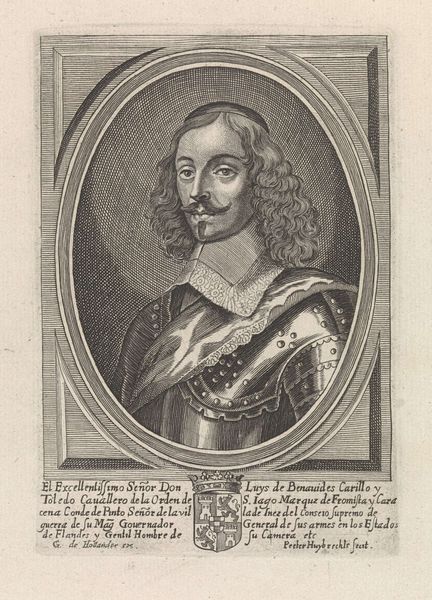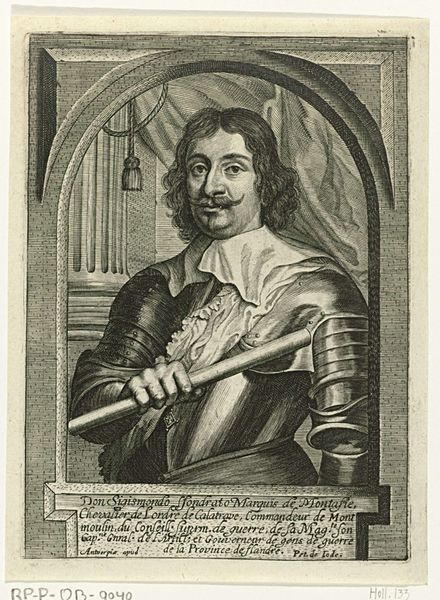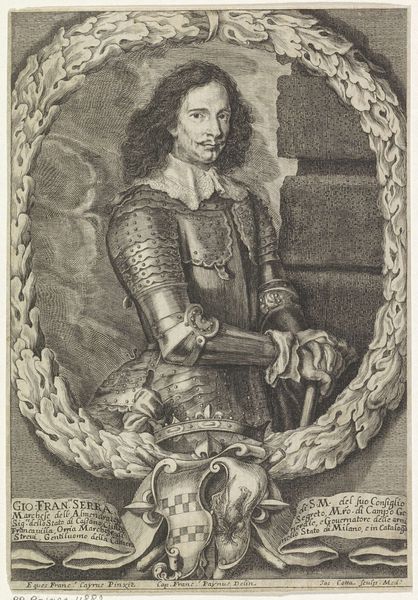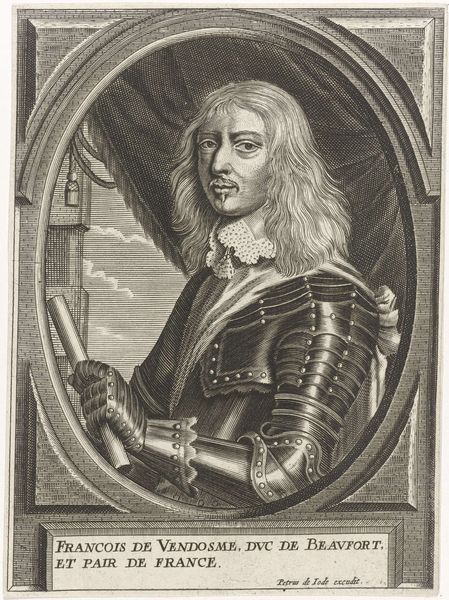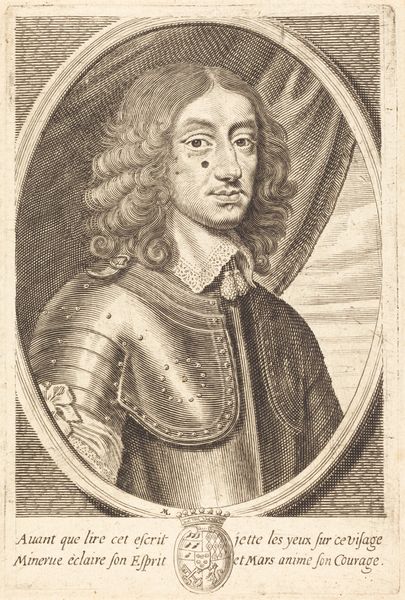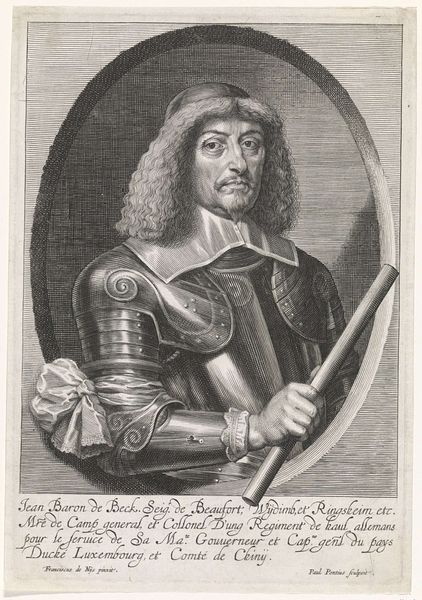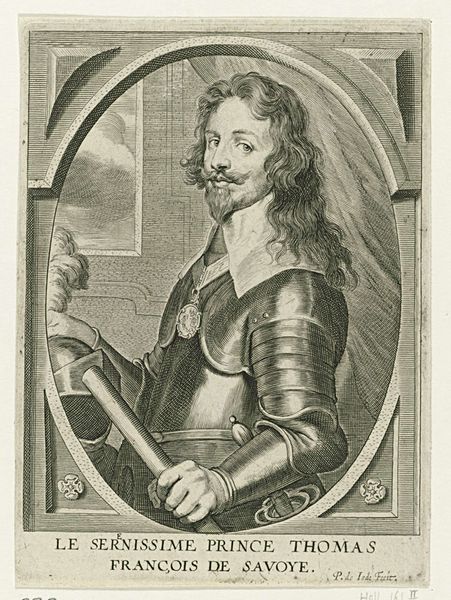
print, engraving
#
portrait
#
pencil drawn
#
toned paper
#
facial expression drawing
#
baroque
# print
#
pencil sketch
#
old engraving style
#
figuration
#
portrait reference
#
pencil drawing
#
pen-ink sketch
#
line
#
portrait drawing
#
history-painting
#
engraving
#
pencil art
Dimensions: height 171 mm, width 119 mm
Copyright: Rijks Museum: Open Domain
This print, portraying Engelbrecht II, Count of Nassau, was made anonymously using the technique of engraving. An engraver uses a tool called a burin to carve lines directly into a metal plate. The plate is then inked, and the ink wiped away, leaving it only in the incised lines. When printed, the ink transfers to the paper under great pressure, creating an image. The linear quality and the level of detail, especially in rendering textures like fabric and armor, testify to the engraver’s skill. Unlike painting, engraving is an indirect process. The image emerges through careful, precise labor. The engraver doesn’t have the freedom of a painter; they must plan their marks meticulously. Prints like this were a key form of visual communication in their day, allowing images to circulate widely. The print medium democratized images, making them accessible to a broader public and contributing to the formation of shared cultural identities. It reminds us that materials, making, and context are crucial to understanding the full meaning of an artwork.
Comments
No comments
Be the first to comment and join the conversation on the ultimate creative platform.
